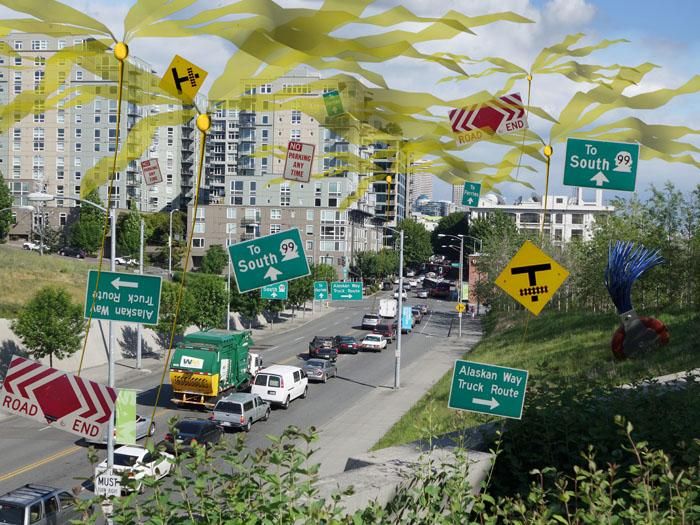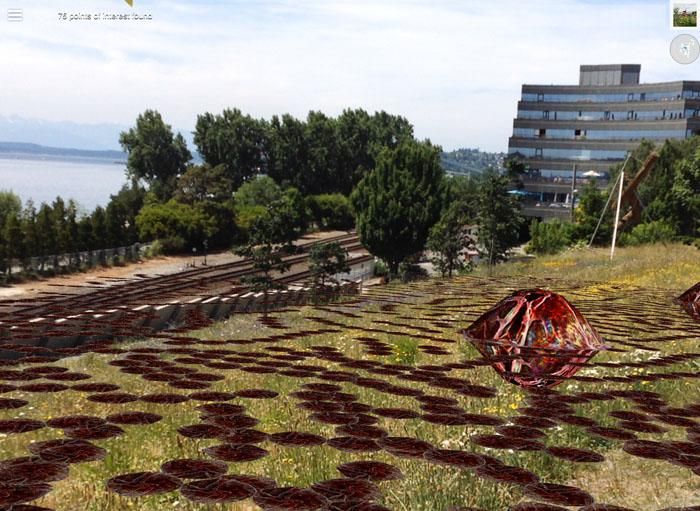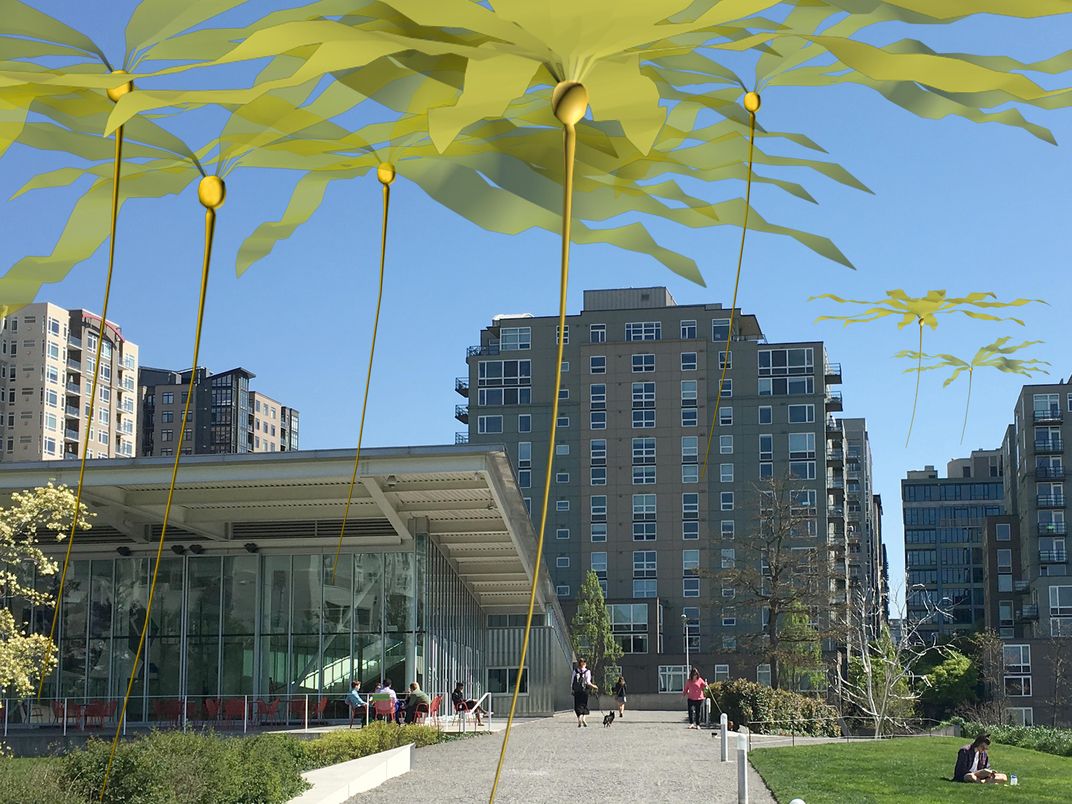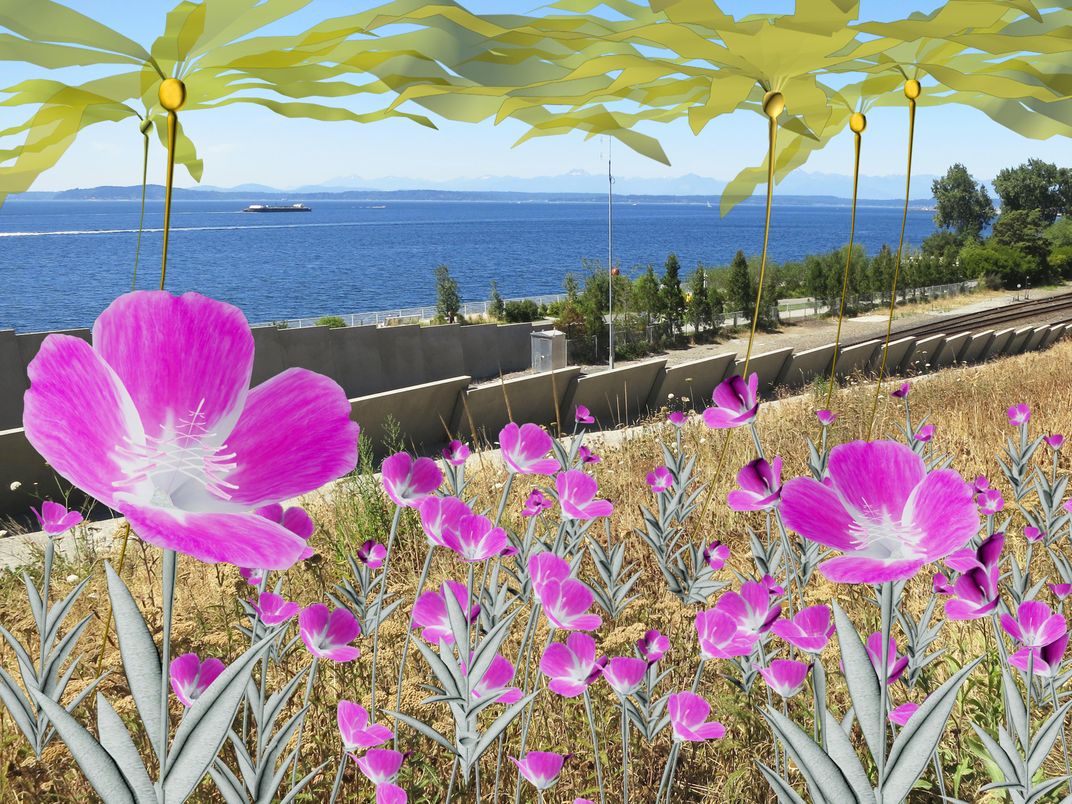Augmented Reality Art Imagines What Could Be Seattle’s Weird, Bleak Future
Artist envisions mutant flowers and drone-like seaweed that may one day take over a post-climate change Seattle
Imagine Seattle street signs strewn with kelp. Or mutated flowers threatening pedestrians near Lake Union with their sharp, sharp teeth. Those visions sound scary, but they could be possible in the Seattle of tomorrow. So warns Gardens of the Anthropocene. As Brendan Kiley reports for The Seattle Times, the art exhibition now on view at the Seattle Art Museum is a virtual reality project that explores a doom-laden future brought on by climate change.
But don’t expect to see Gardens of the Anthropocene in the galleries or even in the museum's Olympic Sculpture Park: It’s only viewable via an app overlay designed by augmented reality artist Tamiko Thiel. Think of it as a post-apocalyptic Pokémon Go—a virtual world that shows just how creepy climate change could be for the Pacific Northwest.
The exhibition makes use of Layar, a free app that lets users create augmented reality landscapes. When viewed on a phone or tablet, Thiel’s vision becomes “reality” when it's projected over the existing landscape. Suddenly, the placid, park-like atmosphere morphs into one that’s infinitely more unsettling—filled with mutant plants and landscapes gone awry with the help of rising water, higher temperatures and natural selection run wild.
Each seemingly weird plant in Gardens of the Anthropocene could one day become reality. Thiel developed her art with the help of climate scientists from the University of Washington’s Center for Creative Conservation, which tries to develop collaborations that result in innovative ways to tackle climate change. In this case, Thiel looked at what might happen to a number of plants that can be found throughout the Pacific Northwest.
Bullwhip kelp, for example, is familiar to anyone who’s taken a dip on a beach on the West Coast. But given storm surges fueled by rising sea levels and higher temperatures, the seemingly benign algae could transform into mutated “drones” that feed off of land-dwelling plants. And the Alexandrium catenella algae that cause Puget Sound’s "red tides" could mutate in warmer waters, growing into a gigantic version of its currently microscopic self.
The exhibition may be scary, but that’s by design. As Thiel tells Kelly, “I try to alternate beauty with strangeness or horror.” The exhibition, which will remain at the museum until September 30th, definitely brings both—and serves as a bleakly beautiful reminder that it’s never too early to think of the landscapes of tomorrow.
(h/t: The Architect's Newspaper)
Editor's note, September 21, 2016: This post has been updated to reflect the exhibition will continue to run until September 30th.
/https://tf-cmsv2-smithsonianmag-media.s3.amazonaws.com/accounts/headshot/erin.png)




/https://tf-cmsv2-smithsonianmag-media.s3.amazonaws.com/accounts/headshot/erin.png)